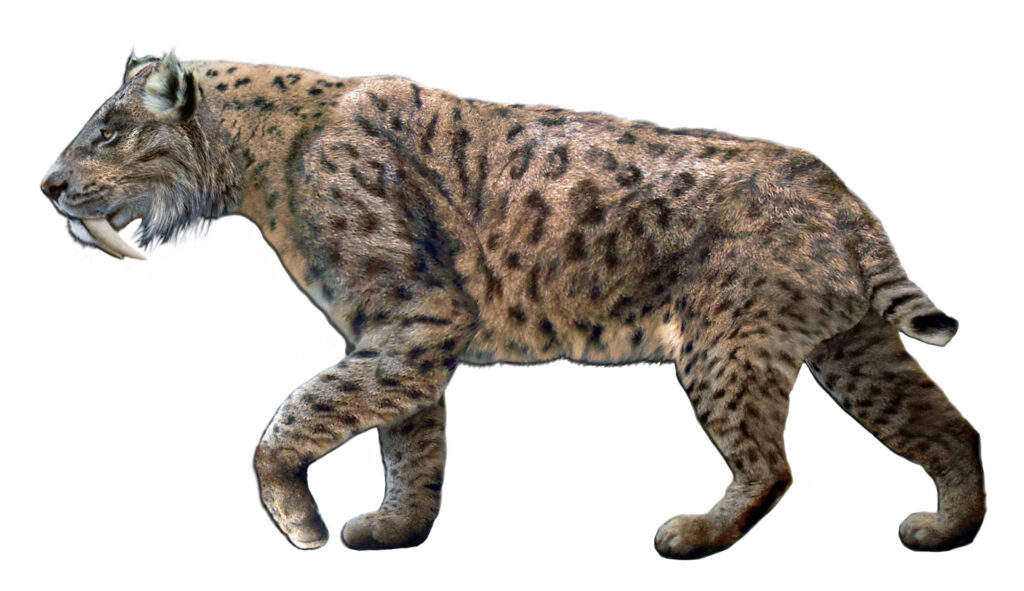Picture yourself stepping back through time when our ancestors shared the earth with creatures so massive and extraordinary they would leave you breathless. These weren’t just regular animals but giants that could tower over modern elephants, predators with fangs longer than your forearm, and beasts that could reshape entire landscapes with their sheer presence. The world was wilder then, more dangerous, yet somehow more magnificent.
From frozen tundras to lush grasslands, early humans navigated a planet populated by megafauna that would make today’s largest animals seem like house pets. Let’s dive into this incredible lost world and meet eight of the most awe-inspiring creatures that once walked alongside our prehistoric ancestors.
Woolly Mammoths: The Shaggy Giants of the Ice Age
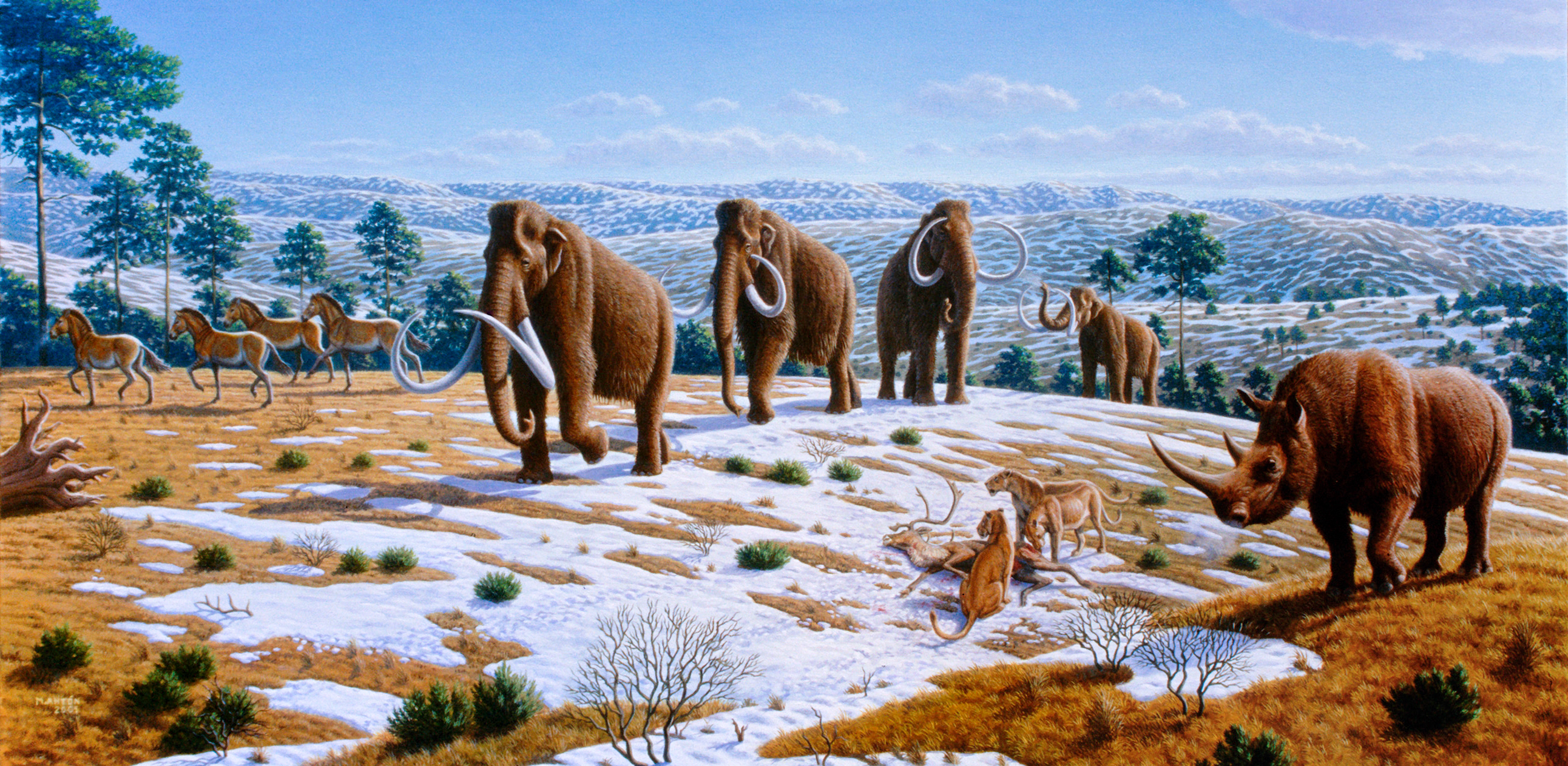
Imagine encountering a creature standing up to 11 feet tall and weighing up to 6 tons, covered in thick, russet-colored fur that rippled in the arctic wind. Woolly mammoths, with their thick fur and impressive tusks, were well adapted to the frigid conditions of the Ice Age and shared habitats with humans across vast stretches of Eurasia and North America, weighing up to 13,000 pounds and standing between 10 and 12 feet tall on average. These magnificent beasts weren’t just surviving in the harshest climates on earth, they were thriving.
You would have seen evidence of mammoth-human interaction everywhere in the prehistoric world. Forensic evidence suggests that Paleo-Americans hunted mammoths and mastodons in North America as early as 13,000 years ago. Recent evidence of mammoth bones distributed in two trap pits in Mexico gives us a clue into how human hunters took woolly mammoths down, using these traps to separate mammoths from their herds, leaving them as easy prey. These weren’t random encounters but carefully planned hunts that required tremendous skill and cooperation.
The relationship between you and these gentle giants would have been complex and meaningful. Beyond hunting, many cultures developed a spiritual connection to megafauna, often incorporating them into art, stories, and religious practices, seeing the animals not simply as prey but as powerful and important beings. Every part of a mammoth had value, from meat for sustenance to bones for shelter construction and ivory for tools.
Saber-Toothed Cats: The Ultimate Ambush Predators
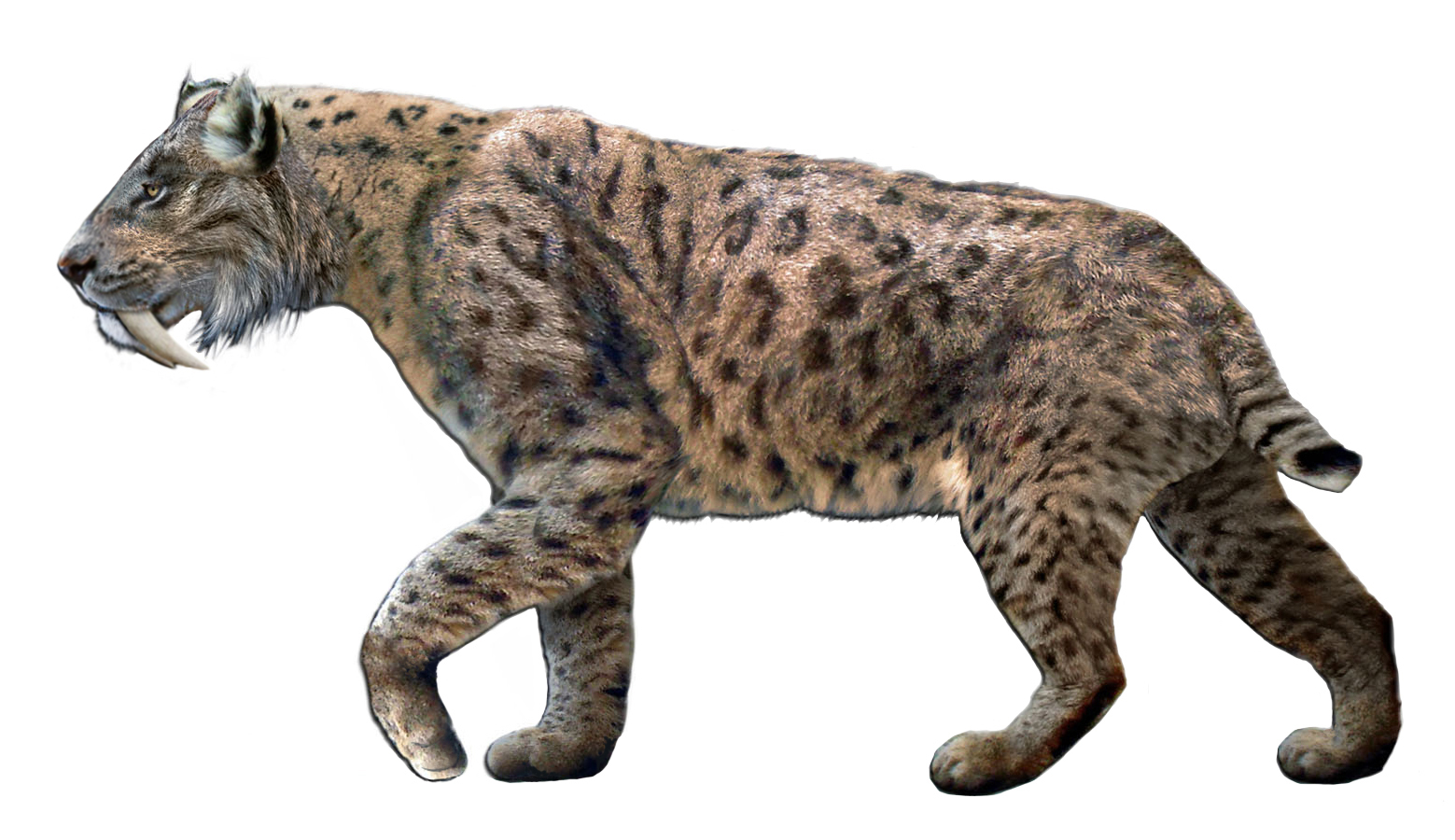
The saber-toothed cat (Smilodon fatalis), with its long, curved canine teeth more reminiscent of a fantasy beast than a terrestrial predator, likely hunted by ambush, driving its fangs into the throats of bison, camels, or young mammoths. Their canines measured up to 7 inches from root to tip, making Smilodon formidable ambush predators that specialized in pouncing on their prey. You would have needed to stay constantly alert in their territory.
Humans lived alongside Smilodon for thousands of years, competing with them for similar prey such as mammoths, bison, and camels, though some think Smilodon may have even preyed on humans, though no direct evidence has yet been found. These cats weren’t built for long chases like modern lions. Instead, they were living tanks with muscular bodies designed for explosive attacks that could take down prey much larger than themselves.
What makes their story even more fascinating is that these predators might have suffered from the same joint problems as your modern pets. Ice Age saber-toothed cats experienced a high incidence of bone disease in their joints, with researchers examining over 1,000 limb bones finding small defects consistent with osteochondrosis dissecans (OCD). Even the apex predators of the Ice Age weren’t immune to health issues.
Giant Ground Sloths: The Gentle Giants with Deadly Claws
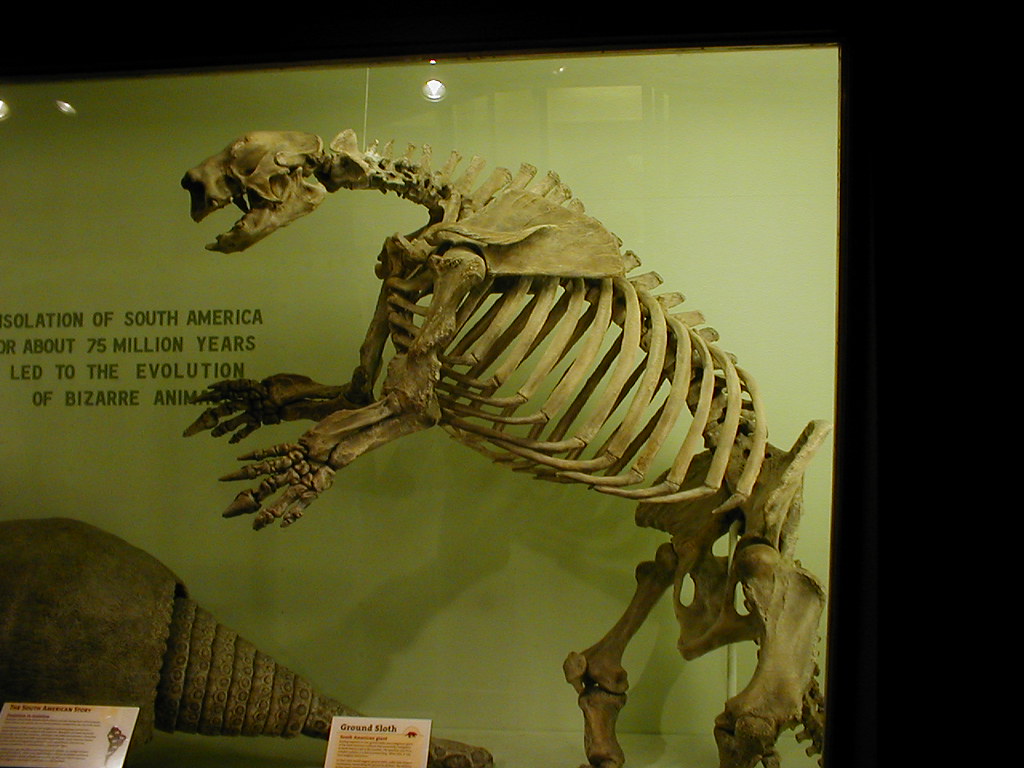
Giant sloths weighed up to 4 tons (3.6 metric tons) and could reach heights comparable to a modern-day elephant, moving surprisingly fast when startled and brandishing enormous claws that could easily defend against predators or even intimidate early human hunters. The giant ground sloth Megatherium had fossilized skeletons showing curved claws nearly a foot long that were likely used to pull down branches, dig for roots, or defend against predators.
Recent fossil evidence proves that ancient humans and sloths coexisted in South America, with fossils between 16,000 and 27,000 years old suggesting that ancient humans were hunting giant sloths and utilizing their bones to make jewelry. You would have approached these creatures with extreme caution, despite their plant-eating nature.
Humans may have been responsible for the sluggish animal’s ultimate extinction, with human predation likely being a key factor in the decline of the slow-moving giant sloth. Their size and defensive capabilities made them challenging prey, but their relatively slow speed made them vulnerable to coordinated human hunting parties.
Short-Faced Bears: The Towering Terrors
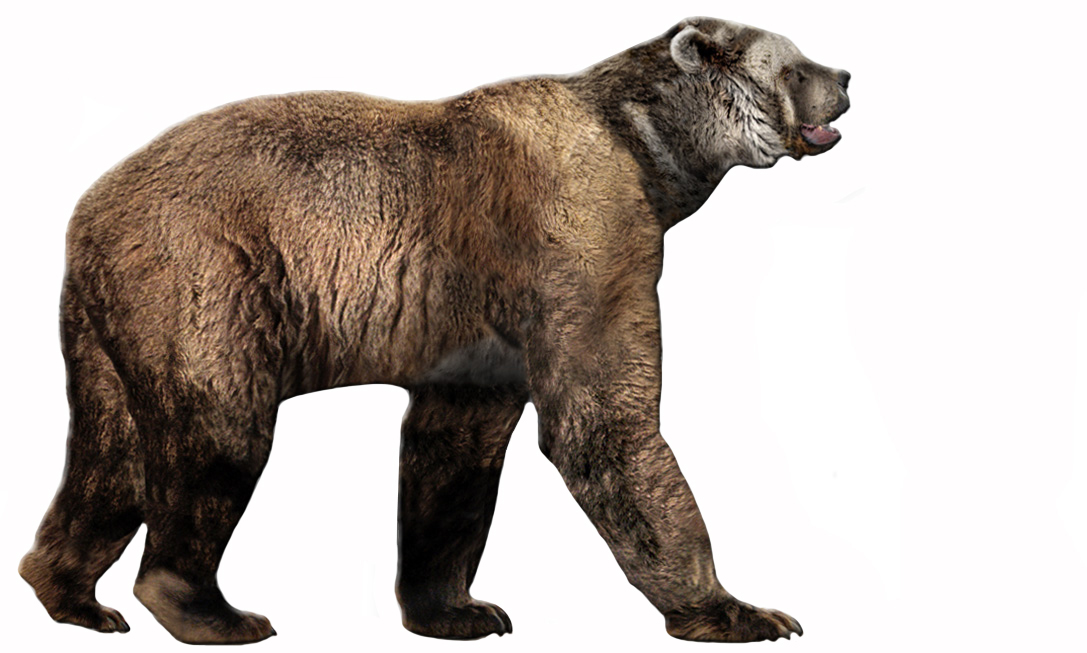
You would have trembled at the sight of Arctodus simus, which stood a good five and a half feet tall at its shoulders and reached ten-foot long, with good-sized males standing eleven to twelve feet when upright with a fourteen-foot vertical arm reach and weighing as much as two thousand pounds. These weren’t your typical bears. The short-faced bear would have been a towering, frightening beast.
Based on studies, scientists concluded that Arctodus simus was a pure carnivore that scavenged prey mammal carcasses. However, while it did sometimes actively hunt young megafauna like ancient bison, horses, camels, and tapirs, they also scavenged off kills made by Smilodon, dire wolves, and American lions, though most of its diet likely came from nuts, berries, tubers, and soft vegetation.
Evidence suggests humans found a bear that probably died before they defleshed it, and there’s also evidence at a site on Orcas Island, Washington, of humans caching bison carcasses underwater, perhaps in an attempt to mask the scent from the giant short-faced bears that were especially prevalent in this area of North America. You would have had to outsmart these giants rather than outfight them.
Dire Wolves: The Pack Hunters from Nightmares
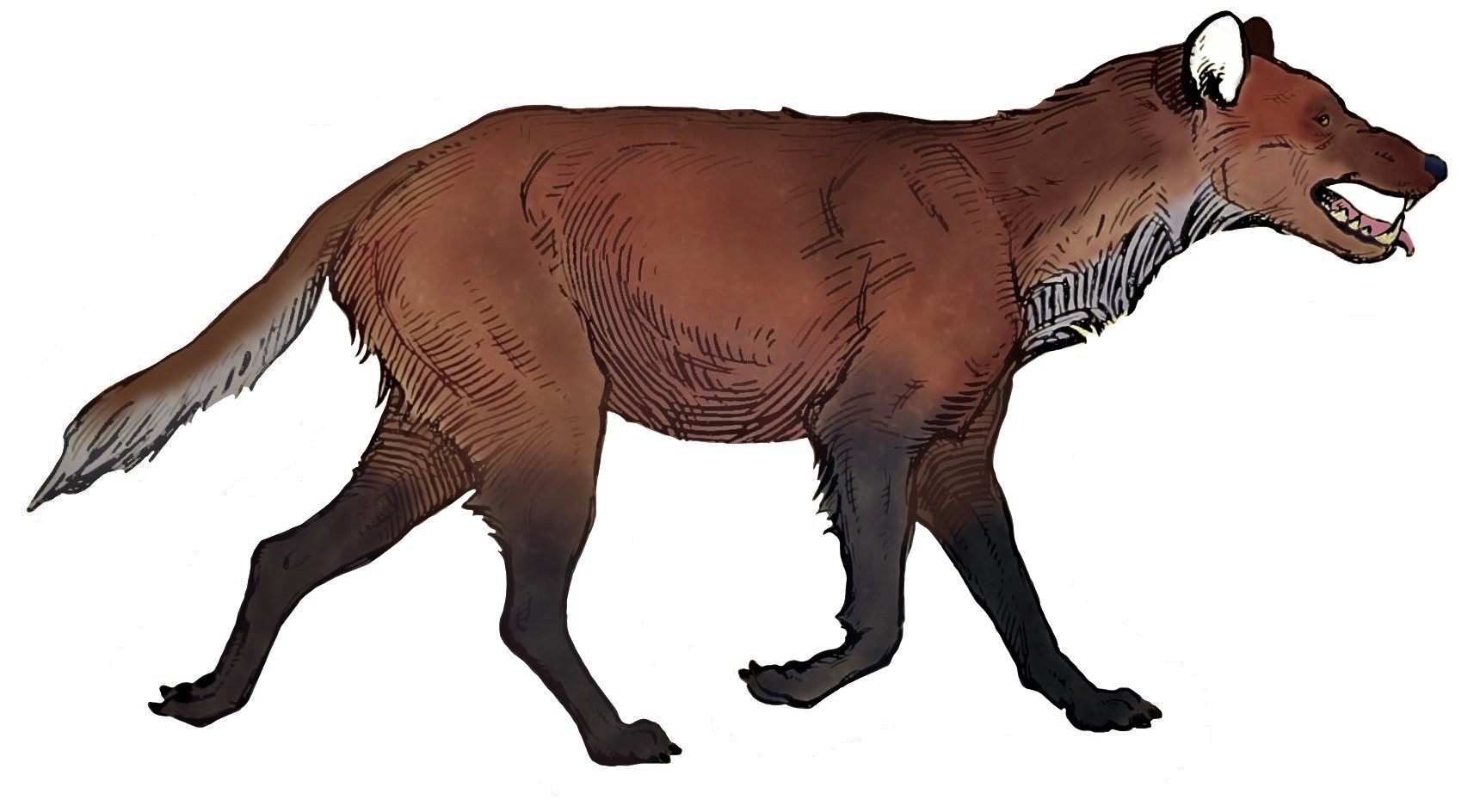
Dire wolves were similar to modern grey wolves, but heavier, with bigger heads, jaws and teeth giving them a strong bite, ideal for killing large prey like camels, horses, and bison, with some experts thinking they would take down a small mastodon from time to time. The dire wolves hunted in packs, but they weren’t long-distance runners like modern-day grey wolves, instead ambushing their prey and working together to bring down an animal once they had a hold of it.
Their large size and powerful jaws were adaptations for preying on many of the giant herbivores that shared their habitat in North America, such as ground sloths, mastodon, and bison, competing with other predators like sabre-tooth cats and cave lions while also tussling with humans and probably hunting in coordinated groups like humans of the time.
At the La Brea Tar Pits, thousands of specimens have been recovered with so many dire wolves that their skulls line the walls of the onsite museum, offering an unparalleled window into predator-prey dynamics unlike permafrost sites which often preserve solitary individuals. You would have encountered these formidable pack hunters across much of North America.
American Cave Lions: The Mane-less Monarchs
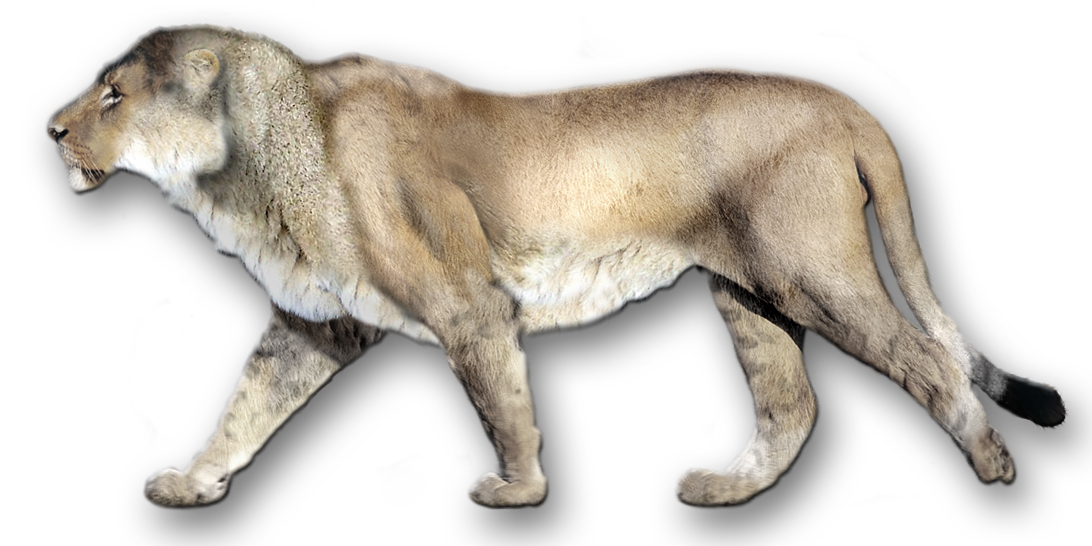
The American cave lion (Panthera atrox) called this continent home and was one of the largest known cats, almost 25 per cent bigger than the lions we see in Africa and India today, standing 1.2 metres at the shoulder and weighing up to 420 kilograms, with Paleolithic art showing that the prehistoric cats had a faintly striped coat and no mane, unlike modern lions.
Quick as lightning and quiet as shadows, the American cave lion was 25% larger than today’s African lions, with muscles built for explosive attacks, specializing in picking off humans who wandered from the group, and cave paintings across Europe and Asia depict these predators more frequently than any other animal, showing our ancestors’ deep-seated fear and respect.
Cave lions coexisted with modern humans by around 41,000 years ago and may have competed against them for food. Although larger than the African lion, the American lion still had proportionately short legs that would have enabled it to reach top speed fast, but would have limited its ability to keep pace with longer legged animals like horses. You would have been a perfect target for these solitary hunters.
Mastodons: The Forest Elephants with Attitude
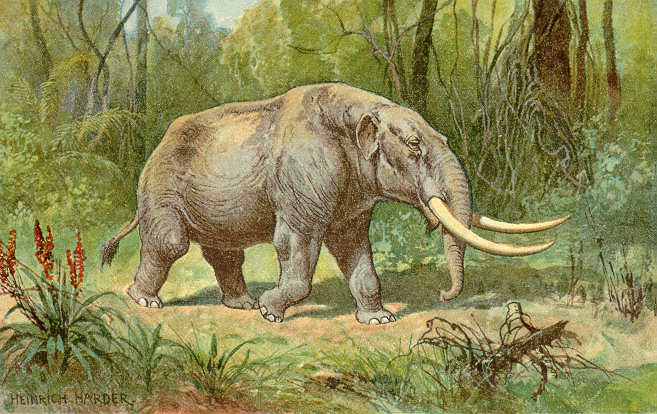
Mastodons were mammoth-like creatures similar to elephants but had distinct features such as long, curved tusks and a stocky build covered in shaggy fur, primarily grazing on shrubs and trees, making them an essential part of their ecosystem. Recent archaeological findings indicate that mastodons interacted with early humans as well, with evidence from sites across North America showing signs of human hunting practices targeting these magnificent animals for sustenance, and tools found alongside mastodon remains suggesting they played a significant role in the diet of prehistoric peoples.
In terms of megafauna that did coexist with humans, the mammoths, mastodons, and giant ground sloths were among the largest. The bones of at least 140 mastodons and 18 mammoths have been found in New York state alone. You would have encountered these massive creatures throughout much of North America.
Mastodon fossils found in groups suggest they lived in tight-knit herds led by matriarchs, much like modern elephants. Mastodons and giant sloths weren’t just inhabitants of ancient ecosystems – they were architects, creating trails through dense forests that became natural pathways for other animals and eventually humans, knocking down trees to reach tender leaves and creating meadows where new plants could grow.
Glyptodonts: The Living Armored Tanks
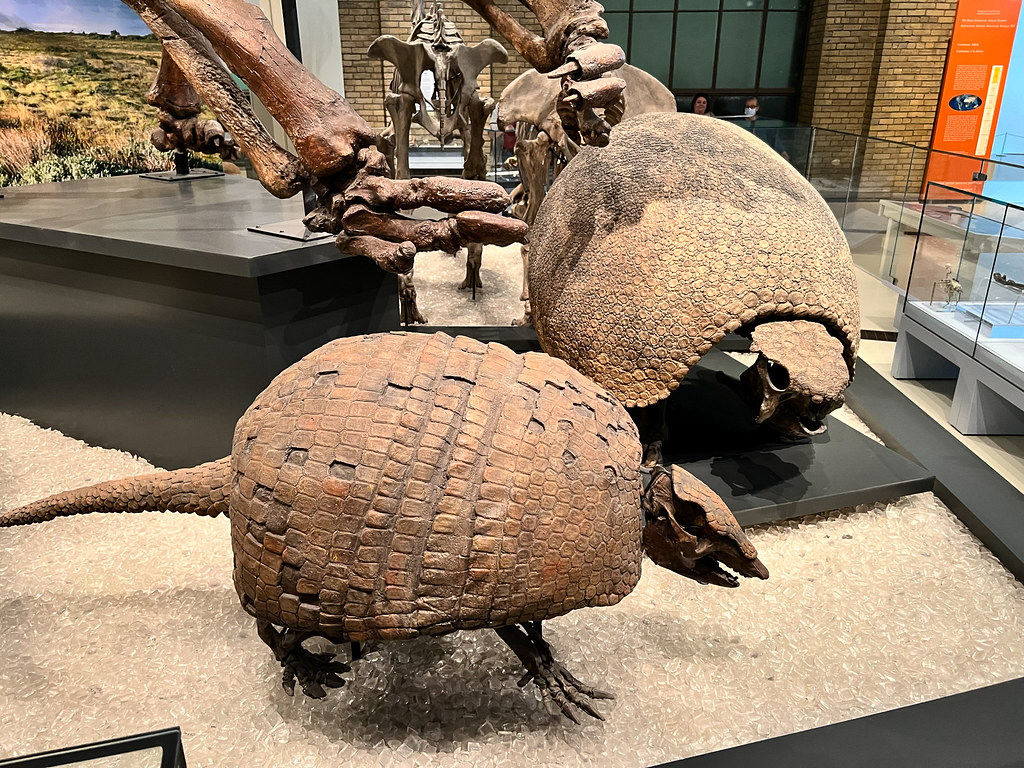
Like other creatures on this list, glyptodonts were rather massive, with their bodies exceeding 4,000 pounds and 10 feet long, having a tortoise-like shell that helped shield their entire body against predators, yet despite their tough exterior, these peaceful creatures weren’t to be feared by their human companions in the Americas.
The thick armor of the glyptodonts made it rather useful to our ancient ancestors, and because it was likely that glyptodonts didn’t fight back, they were easy for human ancestors to kill, with skulls found in Northern Venezuela indicating that it may have suffered multiple blows to its head by ancient human hunters armed with tools like rocks and spears.
While giant glyptodonts were driven to extinction, their modern-day armadillo relatives continue to live on. You would have valued these creatures not just for their meat, but for their incredible shells that could be repurposed as shelters, storage containers, or even boats. These gentle giants represented one of nature’s most successful experiments in defensive armor.
Conclusion
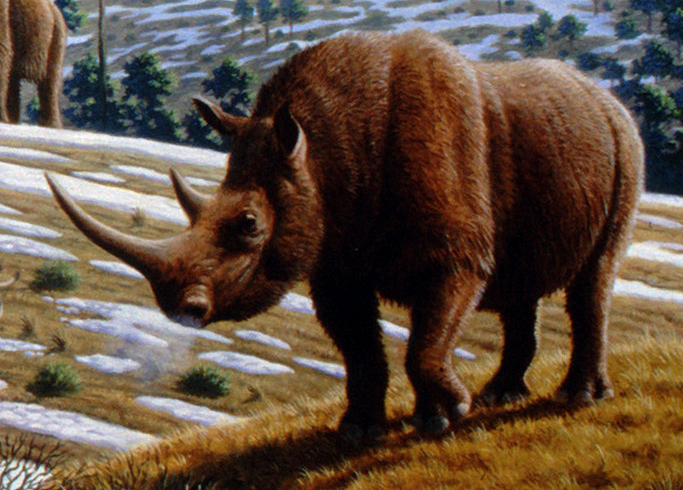
These eight magnificent creatures represent just a fraction of the incredible megafauna that once shared our planet with early humans. During the Late Pleistocene, particularly from around 50,000 years ago onwards, most large mammal species became extinct, including 80% of all mammals greater than 45 kilograms (99 lb), while small animals were largely unaffected, creating a pronouncedly size-biased extinction that is otherwise unprecedented in the geological record.
The extinction of these giants forever changed the course of human history and ecological balance. When these megafauna disappeared, entire ecosystems transformed, with some plant species that depended on these animals for seed dispersal becoming rare or extinct themselves. Perhaps most importantly, this prehistoric tale reminds us that humans have always been just one species among many – powerful, yes, but ultimately dependent on the natural world we share with countless other creatures.
What strikes you most about these ancient giants? Their sheer size, their complex relationships with our ancestors, or perhaps the sobering reminder that even the mightiest creatures can vanish forever? Share your thoughts with us in the comments.

